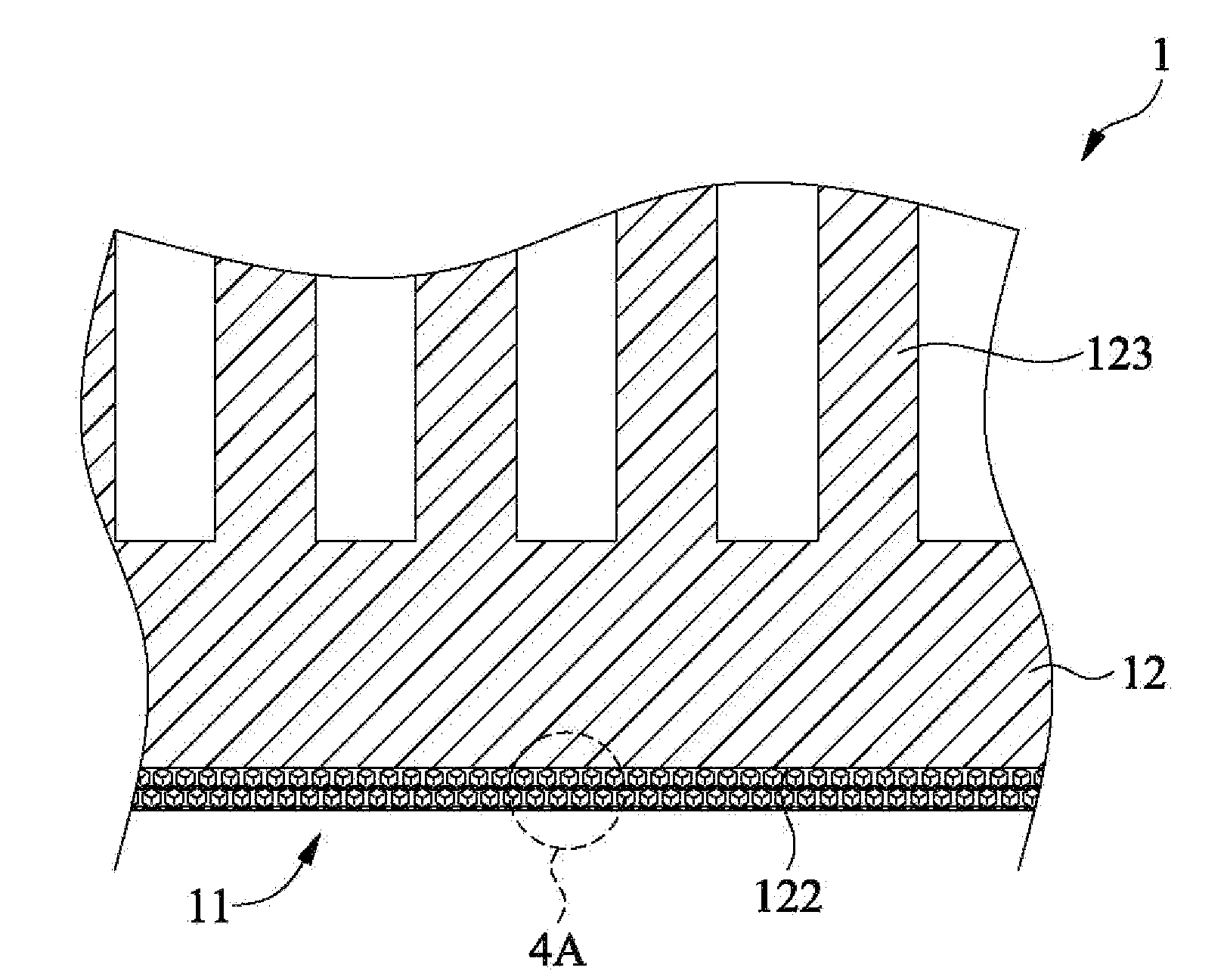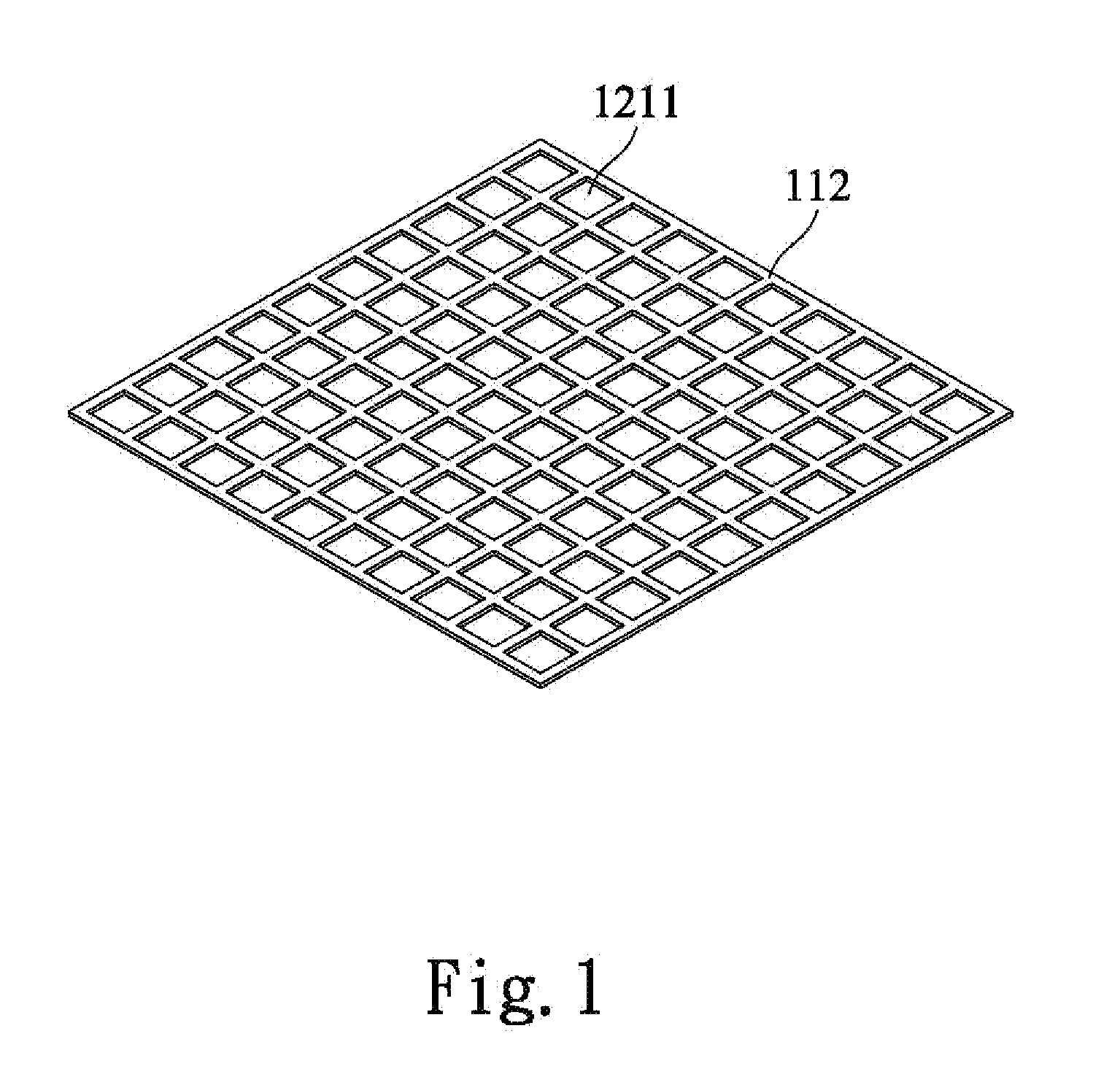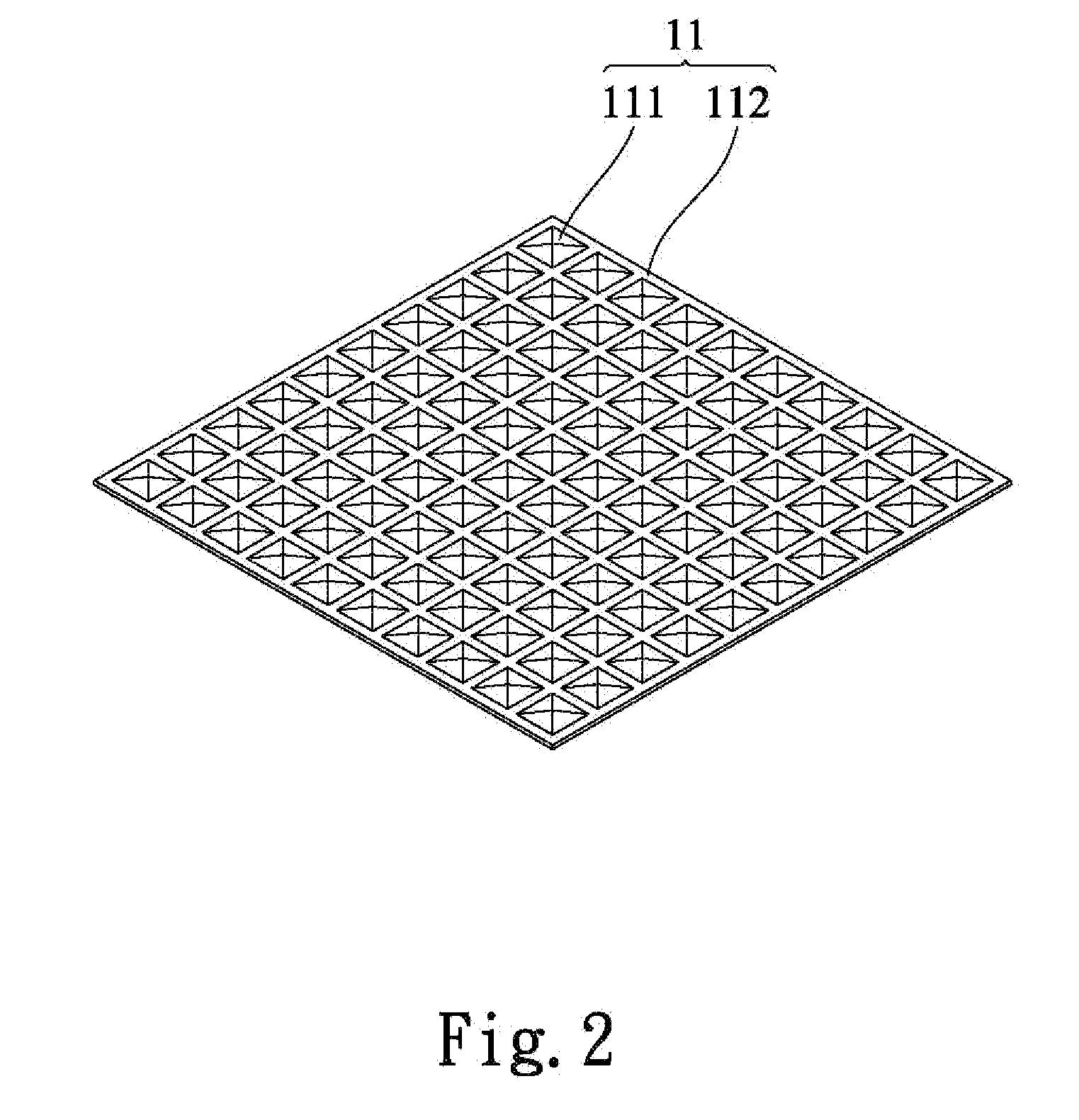Heat spreader structure and method of manufacturing the same
a heat spreader and heat pipe technology, applied in the direction of lighting and heating apparatus, semiconductor/solid-state device details, applications, etc., can solve the problems of heat pipe burnout, adversely affecting the operation efficiency of electronic devices, and the work performance of heat pipes, etc., to achieve excellent heat spreading performance, good bonding power, and high thermal conductivity
- Summary
- Abstract
- Description
- Claims
- Application Information
AI Technical Summary
Benefits of technology
Problems solved by technology
Method used
Image
Examples
first embodiment
[0054]Please refer to FIGS. 1, 2, 3A-B, 4, 4A, 5, and 5A-C. A heat spreader structure 1 according to the present invention includes at least one carbonaceous matter-metal composite layer 11 including a plurality of carbonaceous particles 111 and at least one metal-mesh layer 112. The metal-mesh layer 112 has a plurality of meshes 1121, and can be made of a material selected from the group consisting of copper (Cu), aluminum (Al), silver (Ag), and Nickel (Ni). In a first form of the carbonaceous matter-metal composite layer 11, the carbonaceous particles 111 are separately firmly held inside the meshes 1121 of the metal-mesh layer 112, as shown in FIG. 3B. In a second form of the carbonaceous matter-metal composite layer 11, the carbonaceous particles 111 are covered and held in place by the metal-mesh layer 112, as shown in FIG. 3A. The carbonaceous particles 111 are selected from the group consisting of diamond and graphite particles. In a first example of application, the carbonac...
second embodiment
[0068]FIG. 17 is a sectional view of the heat spreader structure 1 manufactured according to the method according to the present invention.
[0069]FIG. 15 is a flowchart showing the steps included in a method according to a third embodiment of the present invention for manufacturing the heat spreader structure as shown in FIGS. 1, 2, 3A, 4, 4A, 5 and 5A-C. The steps included in the method of the third embodiment are:
[0070]Step 51: providing at least one metal-made body at least one metal-mesh layer and a plurality of carbonaceous particles. In the step 51, at least one metal-made body 12, at least one metal-mesh layer 112, and a plurality of carbonaceous particles 111 are provided. The metal-made body 12 can be configured as any one of a heat sink as shown in FIG. 4, a heat pipe as shown in FIG. 5, and a flat heat pipe as shown in FIG. 5B. The carbonaceous particles 111 can have a particle size ranged from 1 μm to 2 mm, and preferably ranged from 100 μm to 150 μm. The metal-mesh layer...
fourth embodiment
[0075]FIG. 18 is a sectional view of the heat spreader structure 1 manufactured according to the method according to the present invention.
[0076]In the methods according to the present invention for forming the heat spreader structure 1, the material for forming the carbonized layer 1112 can be selected from the group consisting of chromium (Cr), titanium (Ti), tungsten (W), molybdenum (Mo), silicon (Si), and vanadium (V); the material for the metal coating 1111 can be selected from the group consisting of copper (Cu), aluminum (Al), and silver (Ag); the carbonaceous particles 111 can be selected from the group consisting of diamond particles and graphite particles; and the metal particles 113 can be selected from the group consisting of copper (Cu), aluminum (Al), silver (Ag), and nickel (Ni) particles, and are preferably copper particles.
PUM
| Property | Measurement | Unit |
|---|---|---|
| Efficiency | aaaaa | aaaaa |
| Thermal conductivity | aaaaa | aaaaa |
Abstract
Description
Claims
Application Information
 Login to View More
Login to View More - R&D
- Intellectual Property
- Life Sciences
- Materials
- Tech Scout
- Unparalleled Data Quality
- Higher Quality Content
- 60% Fewer Hallucinations
Browse by: Latest US Patents, China's latest patents, Technical Efficacy Thesaurus, Application Domain, Technology Topic, Popular Technical Reports.
© 2025 PatSnap. All rights reserved.Legal|Privacy policy|Modern Slavery Act Transparency Statement|Sitemap|About US| Contact US: help@patsnap.com



